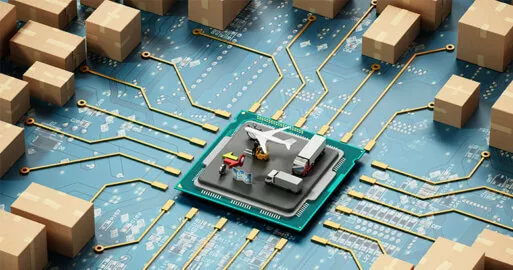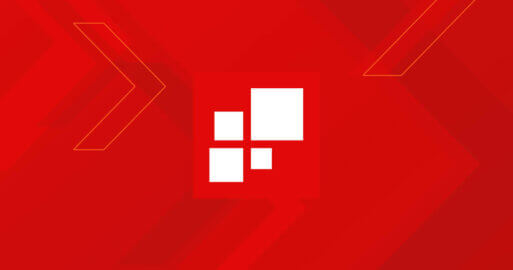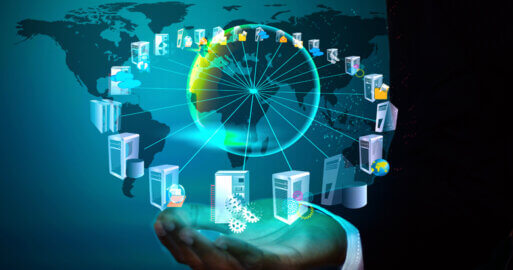Legacy Modernization – Do We Really Have To?

A few months ago, I went on a vacation to Italy. The thing that struck me the most was how ancient architecture was preserved while maximizing the use of modern technologies. It was an excellent blend of the old and new worlds. This blog focuses on the same theme and how Electronic Data Interchange (EDI), a 60-year-old technology that is still vital to the business world, can be modernized using emerging technologies such as cloud computing and API integration. In this educational blog series, we’ll explore how the EDI modernization process works, the challenges we face with legacy EDI systems and how EDI modernization can assist in overcoming these challenges while also providing substantial benefits.
What is legacy modernization?
In recent years, EDI has continued to evolve with the adoption of new technologies such as AI, cloud computing and the use of web-based platforms for EDI transactions, making it easier to integrate EDI with other systems and applications. The practice of consistently enhancing and upgrading current systems, processes and technologies to align with present and future expectations is commonly referred to as “modernization.”
Legacy modernization, also known as application modernization or platform modernization, is the process of updating outdated systems with cutting-edge technology to boost performance and efficiency.
Legacy modernization enhances the security aspects of a legacy application platform. Modernizing legacy systems creates a more conducive atmosphere for large feature integration plans, which otherwise makes a business struggle and may lead to loss of revenue. A modernized platform enables your organization to become more adaptive to future markets by driving a refined end-user experience without technical disruption. However, it is very important to understand the drivers for legacy modernization in your industry and act carefully by choosing the right modernization methodology. Legacy migration is indeed one of the drivers for overall legacy modernization. When organizations make the decision to migrate their legacy systems to new platforms or technologies, it provides them with an opportunity to modernize those systems at the same time.
What’s the difference between legacy migration and legacy modernization?
In order to initiate the process of legacy modernization, it’s important to have a clear understanding of the legacy migration process. Although “legacy migration” and “legacy modernization” may sound similar and are closely related, they are actually distinct concepts with distinct differences.
Legacy migration primarily involves the transfer of existing data, functionality and business rules from a legacy system to a new environment that is more robust and technologically advanced. Legacy modernization is a process that takes a broader perspective. It involves various strategies and approaches to transform or update legacy systems. The goal is to ensure that these systems can meet both current and future needs. This includes making changes to system architecture, user interfaces and functionalities. The aim is to align the systems with contemporary standards and practices.
Legacy migration is a subset of the overall legacy modernization process. It is a crucial aspect of the legacy modernization process, because it ensures that the existing functionality of the system is not lost in any way. Additionally, it aims to leverage the advantages of the new system, which may offer new services and help improve existing functionalities.
The processes of legacy migration and legacy modernization are mutually advantageous, as they provide support and reinforcement to one another. When organizations embark on a legacy migration project, it acts as a catalyst for legacy modernization. The integration of legacy migration and legacy modernization results in enhanced systems that effectively meet present-day requirements and strategically position organizations for future achievements.
How does EDI modernization play a critical role in enterprise-level legacy modernization initiatives?
Understanding the requirements for EDI modernization is crucial while working on a legacy modernization effort in your organization. When it comes to legacy modernization, EDI modernization can boost the efficacy and productivity of information sharing between businesses. Organizations can take advantage of emerging technologies and capabilities and simplify their data exchange procedures by updating and modernizing their EDI/B2B infrastructure and processes.
As time has passed, many organizations have discovered that their aging EDI systems are no longer adequate. It is likely that they are difficult to use, expensive to maintain or incompatible with new technologies. Worse, legacy EDI systems may impede information flow throughout an organization.
The following are some of the main problems with legacy EDI systems:
- Scalability: Organizations may have trouble expanding their operations if they rely on legacy EDI systems that can’t keep up with growing data volumes or adapt to changing business processes.
- Maintenance: Keeping older EDI systems running smoothly can be a significant time and money drain, since it may necessitate the use of specialized personnel and equipment.
- Compatibility: It can be difficult to exchange data with partners or customers if your company is using an EDI system that isn’t compatible with modern software and hardware, which can negatively impact business.
- Heavy customization: This is typical of almost all legacy landscapes, where custom code has taken over the EDI landscape over the years. Custom maps, custom EDI types, flat structures and structures made by the company itself would have been added to the EDI estate all the time. More customization causes more complexity with new partner onboarding and new interface setups.
- Security: Older EDI systems cannot be as secure as more recent ones, leaving them open to cyber threats and data breaches.
- Complicated onboarding: Integrating a brand-new business partner into an aging EDI system can take weeks or even months due to the many places where adjustments must be made.
- Lack of legacy systems knowledge: There are fewer people nowadays who have the deep knowledge required to troubleshoot issues.
- Lack of innovation: Legacy systems may not have access to the latest EDI advancements and innovations, such as AI-enabled data analytics or cloud-based collaboration tools. This can hinder organizations from harnessing the full potential of emerging technologies.
- Lack of visibility and control: Lack of real-time visibility into transaction statuses and limited control over data flows are common issues with legacy EDI systems. This can make it harder to monitor EDI processes and identify problems when they arise.
How does legacy modernization help businesses overcome legacy EDI system challenges?
EDI modernization refers to the process of updating and improving EDI systems and processes to meet the needs of modern business environments. With the complexity and volume of business data rising, EDI must be modernized to become more effective, secure and flexible.
EDI modernization is by far the only solution for the challenges that we face with legacy EDI systems. EDI modernization brings a multitude of benefits to organizations. By upgrading to a modern EDI system, businesses experience improves operational efficiency through streamlined processes and automated data exchange, leading to faster transaction processing and increased productivity. Advanced communication features provide easy data sharing and enhanced supply chain visibility, resulting in improved collaboration with trading partners.
Modern EDI systems’ scalability and flexibility enable businesses to react to changing market demands, quickly onboard new trading partners and support an increase in transaction volumes. Cloud-based modern EDI systems eliminate paper-based procedures, minimize manual labor, and offer a pay-as-you-go paradigm, saving money. By adhering to industry standards, businesses can reduce compliance risks and improve communication with their trading partners. Real-time transaction status visibility and powerful analytics enable proactive issue discovery and speedier problem resolution. Modern EDI systems focus data security and compliance with data privacy requirements, reducing data breaches.
Overall, EDI modernization future-proofs organizations, enabling the integration of emerging technologies and positioning them for continued success in an evolving business landscape.
Below is a graphical illustration of what EDI modernization entails. Modernizing EDI begins with these essentials, which are very critical to modern businesses today.

Modernize your EDI systems with the SEEBURGER BIS Platform
In the next blog of this EDI modernization series, we will explore how the primary components of EDI modernization, including API-led approaches, cloud computing and modern mapping tools, make your EDI system future-proof and modern and can broaden the scope to position your EDI system as the “all-in-one” integration platform of your organization.
Thank you for your message
We appreciate your interest in SEEBURGER
Get in contact with us:
Please enter details about your project in the message section so we can direct your inquiry to the right consultant.
Written by: Hitesh Baraiya
Hitesh Baraiya is a highly experienced Lead Solutions Architect at SEEBURGER since 2017, heading project delivery for cloud migration, digital transformation, iPaaS (Integration Platform as a service) and EDI/B2B/API legacy modernization projects with a demonstrated history of working in the information technology and services industry. For over 15 years, Hitesh has helped complex multi-national organizations across the globe to overcome their business integration challenges by designing and implementing business process solutions and integration platforms. With excellent customer relationship management skills and experience in managing stakeholders at all levels of business, Hitesh has helped businesses achieve their business objectives through technology-driven solution offerings that drive sustainable results.





